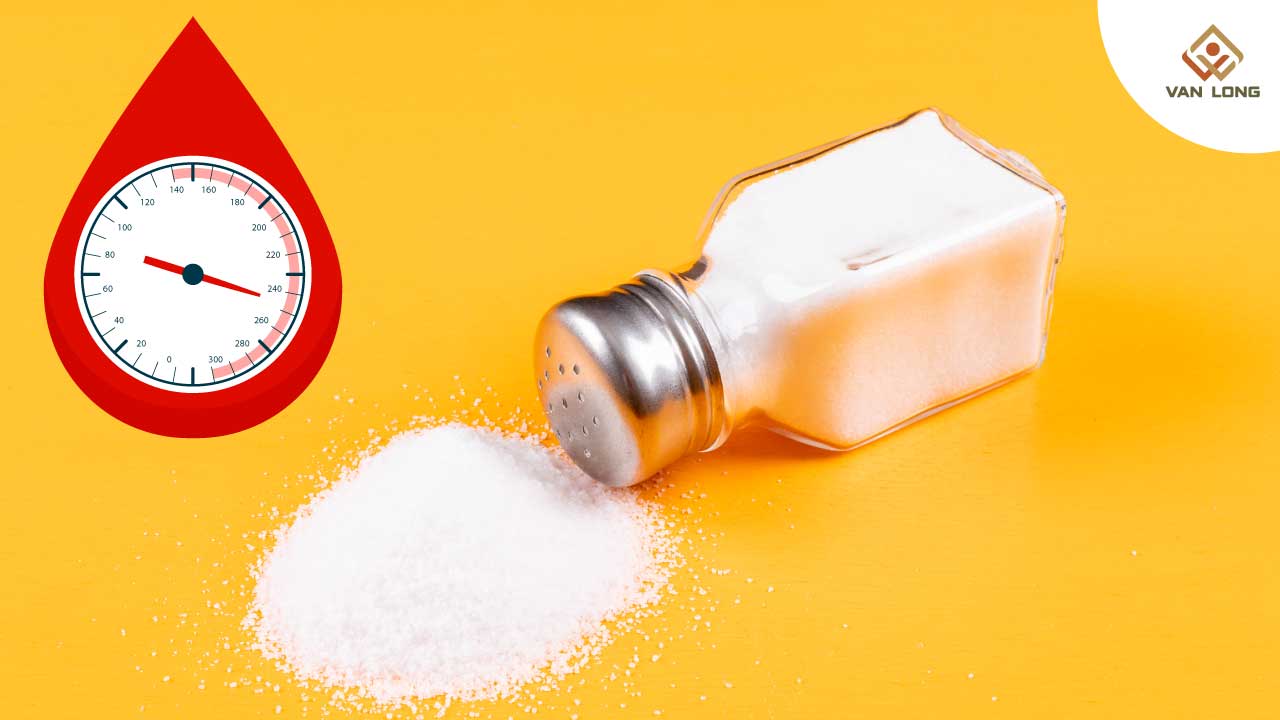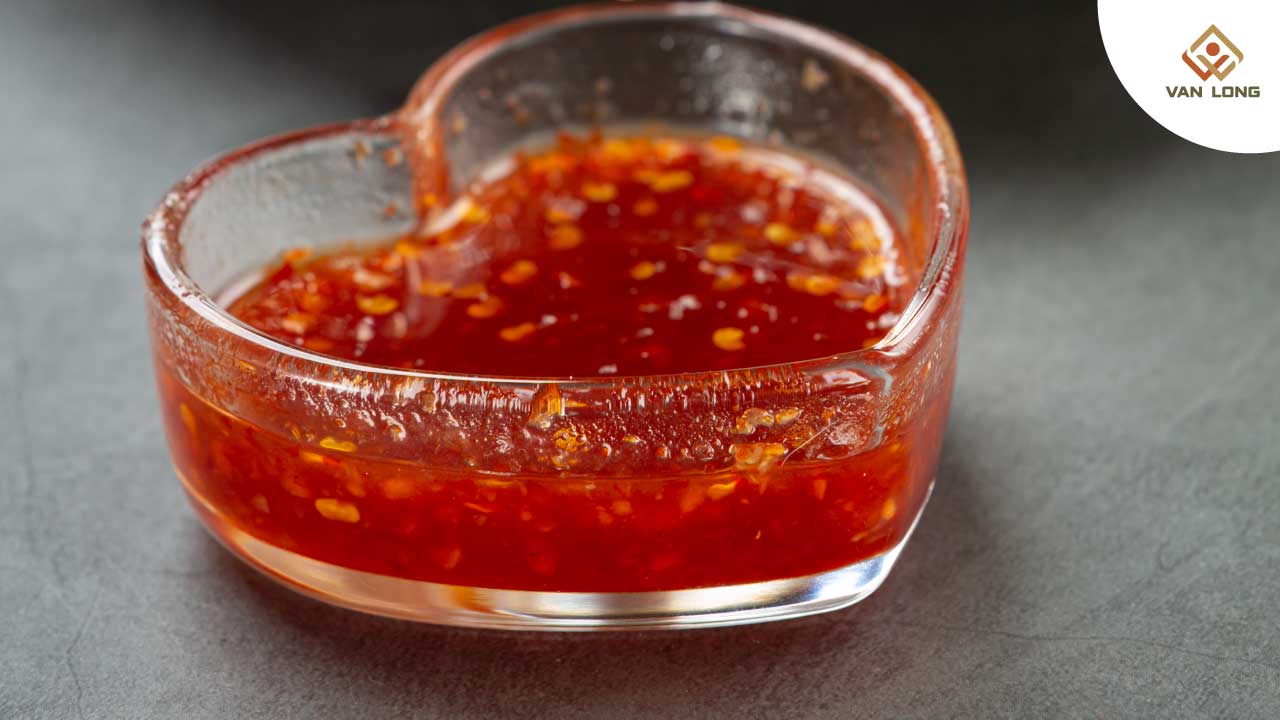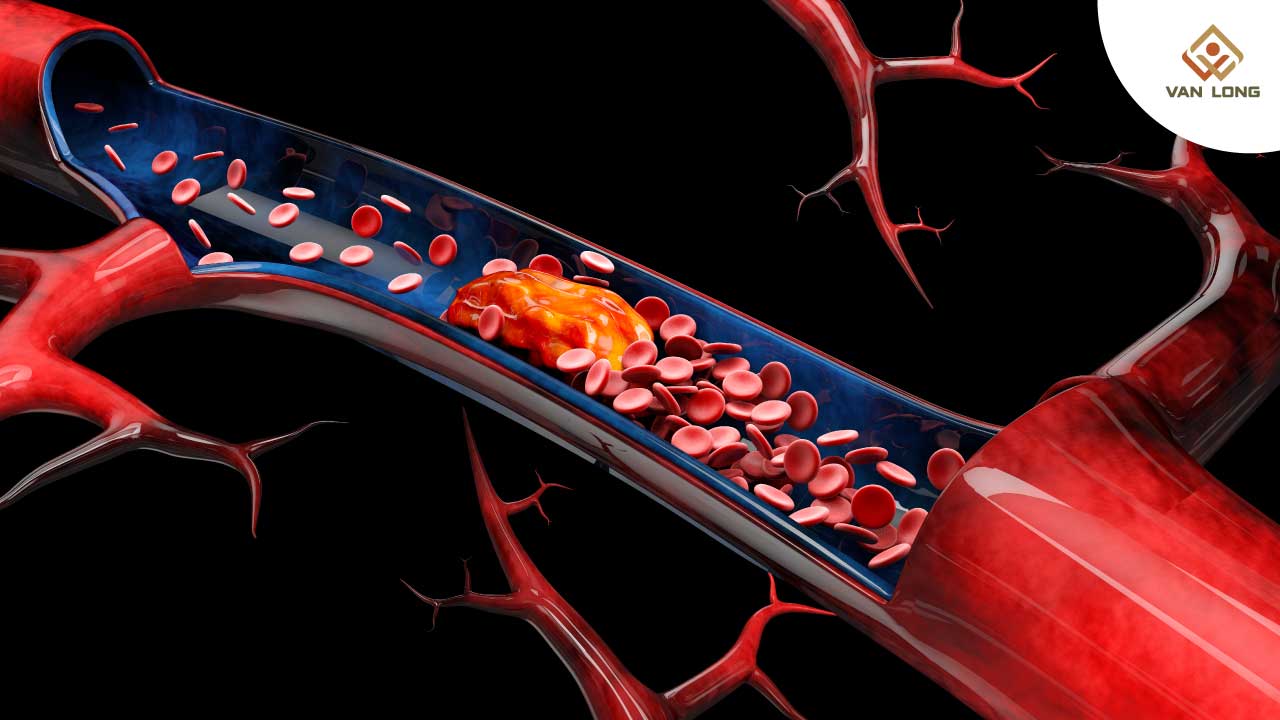Người Việt có thói quen “ăn đậm đà mới ngon miệng”. Bữa cơm quen với chén nước mắm, bát canh nêm đậm, thêm đĩa dưa muối, chén mắm tôm, chén muối tiêu. Ngon miệng thật đấy, nhưng bạn có biết chỉ một thìa nước mắm đã chứa trung bình 1–1.5g muối?
Theo báo cáo của Viện Dinh dưỡng Quốc gia, lượng muối trung bình mà một người Việt tiêu thụ hàng ngày đang là 9.4g, gần gấp đôi khuyến nghị an toàn của WHO. Điều đáng lo hơn cả là đa số không hề biết, muối chính là “thủ phạm thầm lặng” đẩy huyết áp lên cao và tàn phá tim mạch từng ngày.
1. Cơ Chế: Vì Sao Ăn Mặn Lại Làm Tăng Huyết Áp?
 Để hiểu rõ, hãy hình dung:
Để hiểu rõ, hãy hình dung:
-
Khi ăn nhiều muối, natri sẽ giữ nước trong lòng mạch máu.
-
Lượng nước tăng kéo theo thể tích tuần hoàn tăng, máu lưu thông với áp lực lớn hơn.
-
Đồng thời, dư natri gây rối loạn chức năng nội mô, làm co mạch và cứng thành mạch → kháng lực ngoại vi tăng lên.
Hậu quả: Tim phải co bóp mạnh hơn, huyết áp tăng dần theo thời gian. Nhiều nghiên cứu đã chứng minh, người thường xuyên ăn mặn có nguy cơ mắc tăng huyết áp, suy tim, đột quỵ và suy thận cao hơn gấp 2–3 lần so với người kiểm soát tốt lượng muối.
- Theo WHO, 1.7 triệu ca tử vong mỗi năm do bệnh tim mạch liên quan trực tiếp tới ăn mặn.
- Chỉ cần giảm 1g muối mỗi ngày có thể giảm 1–2 mmHg huyết áp tâm thu – con số tưởng nhỏ nhưng giúp giảm hàng triệu ca đột quỵ, nhồi máu cơ tim trên toàn cầu.
2. Bao Nhiêu Muối Là Quá Nhiều? – Chuẩn WHO Và Khuyến Nghị Riêng Cho Người Cao Huyết Áp
2.1. Mức khuyến nghị chung:
-
WHO: ≤ 5g muối/ngày (khoảng 1 thìa cà phê).
-
Trẻ em: điều chỉnh theo cân nặng, nhưng tối đa không vượt quá 5g/ngày.
2.2. Đối tượng cần giảm nhiều hơn:
-
Người đã mắc cao huyết áp, bệnh tim mạch, suy thận mạn tính: lý tưởng ≤ 3–4g/ngày.
-
Người trên 60 tuổi nên ăn nhạt dần để hạn chế biến chứng.
3. Các Loại Thực Phẩm “Ẩn Muối” Nhiều Người Vẫn Ăn Hàng Ngày
 Nhiều người nghĩ: “Tôi không ăn mặn, chỉ nêm vừa miệng”. Nhưng muối không chỉ nằm ở thìa muối trắng bạn bỏ vào nồi. 70% lượng natri đến từ thực phẩm chế biến sẵn, gia vị công nghiệp, đồ hộp, snack.
Nhiều người nghĩ: “Tôi không ăn mặn, chỉ nêm vừa miệng”. Nhưng muối không chỉ nằm ở thìa muối trắng bạn bỏ vào nồi. 70% lượng natri đến từ thực phẩm chế biến sẵn, gia vị công nghiệp, đồ hộp, snack.
-
Nước mắm, nước tương, mắm tôm: 1 thìa cà phê = 1–1.5g muối.
-
Xúc xích, lạp xưởng, thịt nguội, phô mai chế biến: 1 lát nhỏ có thể chứa 500–700mg natri.
-
Đồ hộp: cá hộp, thịt hộp, soup đóng hộp đều rất mặn để bảo quản.
-
Snack, bánh quy mặn, mì ăn liền: hầu hết gói gia vị có lượng natri lớn.
-
Bánh mì sandwich, pizza, sốt salad: tưởng nhạt nhưng nhiều natri ẩn.
4. Tác Hại Ăn Mặn Với Tim Mạch Và Các Cơ Quan Khác

4.1. Tim – Bộ máy bơm máu chịu gánh nặng đầu tiên
Tim phải hoạt động mạnh mẽ để bơm máu đi nuôi cơ thể khi huyết áp cao → phì đại thất trái, lâu dài dẫn tới suy tim sung huyết.
4.2. Thận – Bộ lọc natri
Thận gánh phần lớn nhiệm vụ đào thải natri. Khi ăn quá mặn, thận hoạt động quá tải → suy thận mạn, tăng nguy cơ lọc máu.
4.3. Mạch máu – Thành mạch bị tổn thương
Dư natri phá vỡ lớp lót nội mô, thúc đẩy xơ vữa động mạch, dễ gây nhồi máu não, đột quỵ.
5. Làm Sao Để Kiểm Soát Lượng Muối Trong Khẩu Phần?
 Chuyển từ ăn mặn sang ăn nhạt không khó, quan trọng là làm đều đặn. Hãy bắt đầu từ những mẹo nhỏ nhưng hiệu quả lớn:
Chuyển từ ăn mặn sang ăn nhạt không khó, quan trọng là làm đều đặn. Hãy bắt đầu từ những mẹo nhỏ nhưng hiệu quả lớn:
5.1. Tự nêm nếm giảm dần:
- Giảm muối, hạt nêm mỗi tuần 10–20%.
- Vị giác sẽ thích nghi trong 2–3 tuần.
5.2. Ưu tiên gia vị tự nhiên:
- Dùng chanh, giấm, hành tỏi, tiêu, rau thơm để tăng vị ngon mà không cần muối.
- Tránh thói quen chấm mắm, xì dầu đậm.
5.3. Tự nấu ăn tại nhà thay vì ăn ngoài:
- Nhà hàng, quán ăn thường nêm nhiều muối để đậm đà.
- Khi phải ăn ngoài, hãy dặn đầu bếp nêm nhạt.
5.4. Học đọc nhãn dinh dưỡng:
- Natri (Sodium) thường ghi bằng mg – 100mg natri ~ 0.25g muối.
- Chọn thực phẩm “low sodium” (<120mg/100g).
5.5. Lập danh sách thực phẩm nên tránh:
- Đồ đóng hộp, thịt chế biến sẵn, mì ăn liền, snack.
- Thay bằng thực phẩm tươi, ít chế biến.
6. Hướng Dẫn Đọc Nhãn Natri Khi Đi Siêu Thị
Bảng quy đổi:
- 1g natri ~ 2.5g muối.
- Natri an toàn: dưới 2.000mg/ngày.
Mẹo nhanh:
- Luôn nhìn % RDI (Recommended Daily Intake) cho natri – chọn sản phẩm <5%/khẩu phần.
- So sánh các nhãn: cùng 1 sản phẩm, chọn loại có natri thấp hơn.
Tip: Đừng quên “nước sốt” – nhiều natri nhất chính là phần bạn hay rưới thêm.
7. Vai Trò Của Máy Đo Huyết Áp Tại Nhà – Người Bạn Đồng Hành Của Chế Độ Ăn Nhạt
 Nhiều người giảm muối vài hôm rồi bỏ cuộc vì không biết liệu mình ăn nhạt vậy đã đủ chưa?
Nhiều người giảm muối vài hôm rồi bỏ cuộc vì không biết liệu mình ăn nhạt vậy đã đủ chưa?
Câu trả lời: Hãy đo huyết áp đều đặn.
7.1. Lợi ích của đo huyết áp tại nhà:
- Theo dõi hiệu quả giảm muối: huyết áp giảm dần → động lực lớn để kiên trì.
- Phát hiện sớm biến động bất thường.
- Chủ động trao đổi kết quả với bác sĩ khi cần điều chỉnh thuốc.
7.2. Mẹo chọn máy đo huyết áp chất lượng:
- Chọn máy đo bắp tay tự động, thương hiệu uy tín, có kiểm định CE/FDA.
- Ưu tiên máy hiển thị to, dễ thao tác.
- Tính năng lưu lịch sử đo giúp so sánh theo tuần/tháng.
7.3. Hướng dẫn đo huyết áp đúng:
- Ngồi nghỉ 5–10 phút trước đo.
- Không uống cà phê, rượu trước 30 phút.
- Đo vào khung giờ cố định, lý tưởng sáng sớm và buổi tối.
- Tay đặt ngang tim, không nói chuyện khi đo.
8. Thực Đơn Gợi Ý 1 Ngày Giảm Muối Mà Vẫn Đủ Chất
-
Sáng: Phở gà tự nấu, không dùng hạt nêm công nghiệp, nêm bằng hành, tiêu, lá chanh.
-
Trưa: Cá hấp gừng sả, canh rau cải nấu thịt bằm, cơm gạo lứt. Chấm chanh tiêu thay nước mắm.
-
Tối: Salad rau củ trộn dầu olive, ức gà luộc, soup bí đỏ. Ăn kèm trái cây tươi.
-
Snack: Hạn chế snack mặn, thay bằng hạt không tẩm muối.
9. Ăn Mặn Ít Một Chút, Sống Khỏe Lâu Một Chút
Ăn nhạt không phải ép mình khổ sở – đó là thói quen hình thành để bảo vệ tim mạch, thận, não bộ. Máy đo huyết áp tại nhà chính là “trợ lý sức khỏe” trung thực nhất, cho bạn biết chế độ ăn đã đủ tốt chưa. Hãy bắt đầu giảm muối ngay hôm nay – vì một huyết áp ổn định và trái tim khỏe mạnh lâu dài.
——————————
CÔNG TY TNHH PHÁT TRIỂN THƯƠNG MẠI DỊCH VỤ VÂN LONG
YOUR NEEDS - OUR BUSINESS
-
Hotline: (028) 3526 2468 / 098.484.0440
-
Email: cskh@vl-groups.com
-
Website: www.vl-groups.com
-
Địa chỉ:
- Văn phòng HCM: Tòa nhà Fosco, D35 + D36 - 40 Bà Huyện Thanh Quan, P.Xuân Hòa, TP. HCM
- Trung tâm bảo hành: 373/14 Nguyễn Kiệm, P.Đức Nhuận, TP.HCM
- Văn phòng Hà Nội: Khu VP Hồng Hà, 38.3/1 Ngõ 109 Trường Chinh, P.Phương Liệt, Q.Thanh Xuân, Hà Nội
- Kho Tổng: 938 Quốc Lộ 1A, P.Linh Xuân, TP.HCM
🌼 Shopee: https://shopee.vn/vanlonggroups
🌼 Tiktok: https://www.tiktok.com/@thietbichamsocsuckhoe
🌼 Tiki: https://tiki.vn/cua-hang/cham-soc-suc-khoe-van-long
🌼 Lazada: https://www.lazada.vn/shop/van-long-our-needs-your-business




